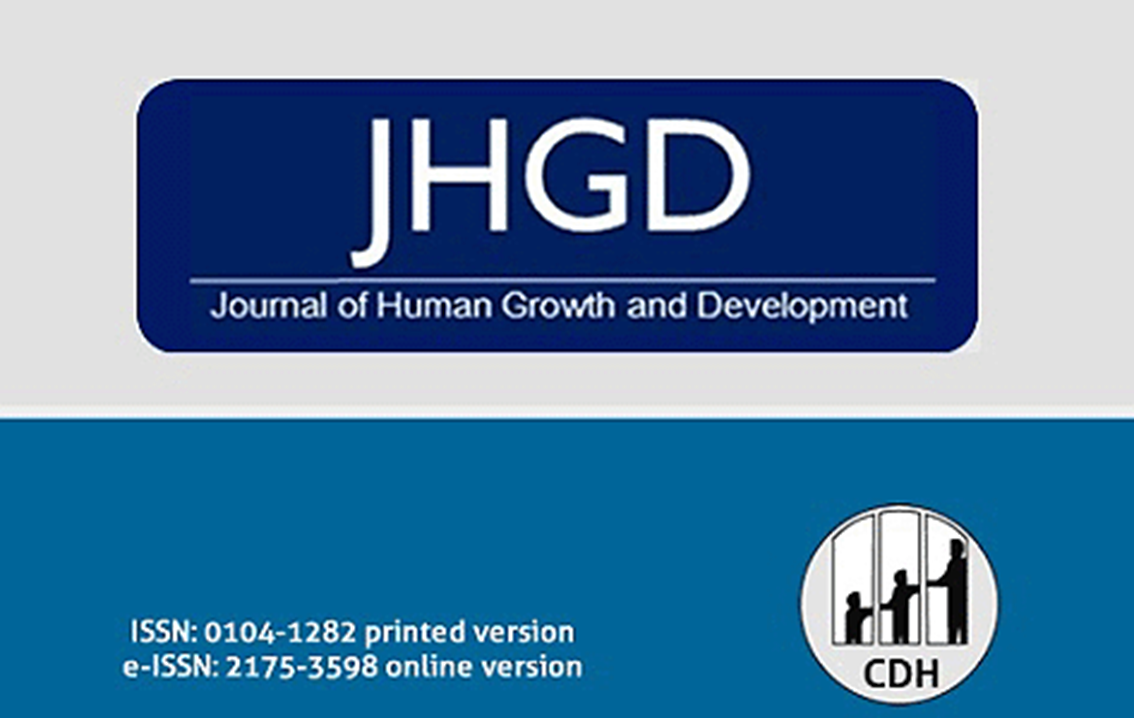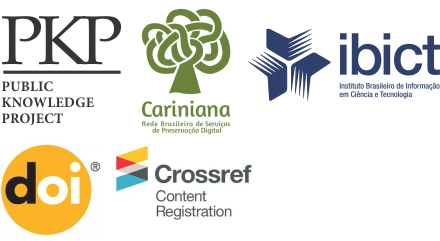The dissemination of COVID-19: an expectant and preventive role in global health
DOI:
https://doi.org/10.7322/jhgd.v30.9976Keywords:
SARS-CoV-2, 2019 novel coronavirus, COVID-19, Health promotion, Public health, EpidemyAbstract
Coronaviruses (CoV) make up a large family of viruses, known since the mid-1960s, which received this name due to the spikes on its surface, which resemble a crown (from the Latin corona). CoV infections can cause everything from a common cold to severe respiratory syndromes, such as severe acute respiratory syndrome (SARS-CoV) and Middle Eastern respiratory syndrome (MERS-CoV). COVID-19 is a new variant of the coronavirus, and its isolation occurred in China on January 7th, 2020. COVID-19 has stood out with a high impact on public health due to the high number of cases with infection in a short period of time. However, it is possible to observe that 17% of patients confirmed with COVID-19 have severe infections and about 2.5% of these patients die. Current studies have shown that the number of mild and asymptomatic cases may be even greater. Thus, the challenges for controlling unreported cases of patients with mild symptoms that are spreading the virus and interfering with the magnitude and real data of the cases stand out. The transmission of the coronavirus occurs between humans, and it can occur from person to person through the air, through coughing or sneezing, by touching or shaking hands or by contact with contaminated objects or surfaces, followed by contact with the mouth, nose or eyes. Given the fluctuation in the incidence and the lethality rate, it is essential to stand out the precepts of health promotion in search of reorienting hygiene practices, considering that there is validity in health care models, still with a curative approach and the current situation experienced by the world population requires a preventive stance.
Downloads
References
2. Phelan A, Katz R, Gostin LO. The Novel Coronavirus Originating in Wuhan, China: Challenges for Global Health Governance. JAMA. 2020;323(8):709-10. DOI: http://doi.org/10.1001/jama.2020.1097
3. Lu R, Zhao X, Li J, Niu P, Yang B, Wu H, et al. Genomic characterisation and epidemiology of 2019 novel coronavirus: implications for virus origins and receptor binding. Lancet. 2020;395(10224):565-74. DOI: http://doi.org/10.1016/S0140-6736(20)30251-8
4. Zhu N, Zhang D, Wang W, Li X, Yang B, Song J, et al. A Novel Coronavirus from Patients with Pneumonia in China, 2019. N Engl J Med. 2020;382(8):727-33. DOI: http://doi.org/10.1056/NEJMoa2001017
5. Phan T. Novel coronavirus: From discovery to clinical diagnostics. Infect Genet Evol. 2020;79:104211. DOI: https://doi.org/10.1016/j.meegid.2020.104211
6. Paraskevis D, Kostaki EG, Magiorkinis G, Panayiotakopoulos G, Sourvinos G, Tsiodras S. Full-genome evolutionary analysis of the novel corona virus (2019-nCoV) rejects the hypothesis of emergence as a result of a recent recombination event. Infect Genet Evol. 2020; 79:104212. DOI: https://doi.org/10.1016/j.meegid.2020.104212
7. Biscayart C, Angeleri P, Lloveras S, Chaves TDSS, Schlagenhauf P, Rodríguez-Morales AJ. The next big threat to global health? 2019 novel coronavirus (2019-nCoV): What advice can we give to travellers? Travel Med Infect Dis. 2020;33:101567. DOI: https://doi.org/10.1016/j.tmaid.2020.101567
8. Callaway E, Cyranoski D. Why snakes probably aren't spreading the new China virus. Nature. 2020. DOI: https://doi.org/10.1038/d41586-020-00180-8
9. Ren LL, Wang YM, Wu ZQ, Xiang ZC, Guo L, Xu T, et al. Identification of a novel coronavirus causing severe pneumonia in human: a descriptive study. Chin Med J (Engl). 2020. DOI: https://doi.org/10.1097/CM9.0000000000000722
10. Chen N, Zhou M, Dong X, Qu J, Gong F, Han Y, et al. Epidemiological and clinical characteristics of 99 cases of 2019 novel coronavirus pneumonia in Wuhan, China: a descriptive study. Lancet. 2020;395(10223):507-13. DOI: https://doi.org/10.1016/S0140-6736(20)30211-7
11. Yin Y, Wunderink RG. MERS, SARS and other coronaviruses as causes of pneumonia. Respirology. 2018;23(2):130-7. DOI: https://doi.org/10.1111/resp.13196
12. Song Z, Xu Y, Bao L, Zhang L, Yu P, Qu Y, et al. From SARS to MERS, thrusting coronaviruses into the spotlight. Viruses. 2019;11(1):E59. DOI: https://doi.org/10.3390/v11010059
13. Huang C, Wang Y, Li Xi, Ren L, Zhao J, Hu Y, et al. Clinical features of patients infected with 2019 novel coronavirus in Wuhan, China. Lancet. 2020; 395(10223):497-506. DOI: https://doi.org/10.1016/S0140-6736(20)30183-5
14. Li Q, Guan X, Wu P, Wang X, Zhou L, Tong Y, et al. Early Transmission Dynamics in Wuhan, China, of Novel Coronavirus-Infected Pneumonia. N Engl J Med. 2020. DOI: https://doi.org/10.1056/NEJMoa2001316
15. Holshue ML, DeBolt C, Lindquist S, Lofy KH, Wiesman J, Bruce H, et al. First Case of 2019 Novel Coronavirus in the United States. N Engl J Med. 2020; DOI: https://doi.org/10.1056/NEJMoa2001191
16. Lei J, Li J, Li X, Qi X. CT Imaging of the 2019 Novel Coronavirus (2019-nCoV) Pneumonia. Radiology. 2020. DOI: https://doi.org/10.1148/radiol.2020200236
17. COVID-19 Coronavirus/AGE. Age, Sex, Existing Conditions of COVID-19 Cases and Deaths. [cited 2020 Feb 29] Available from: https://www.worldometers.info/coronavirus/coronavirus-age-sex-demographics/.
18. World Health Organization (WHO). Coronavirus disease (COVID-19) outbreak. [cited 2020 Feb 24] Available from: https://www.who.int/emergencies/diseases/novel-coronavirus-2019
19. World Health Organization (WHO). Novel Coronavirus (2019-nCoV). [cited 2020 Feb 24] Available from: https://www.who.int/docs/default-source/coronaviruse/situation-reports/20200121-sitrep-1-2019-ncov.pdf
20. Carlos WG, Cruz CSD, Cao B, Pasnick S, Jamil S. Novel Wuhan (2019-nCoV) Coronavirus. Am J Respir Crit Care Med. 2020;201(4):P7-P8. DOI: https://doi.org/10.1164/rccm.2014P7
21. Zhao S, Lin Q, Ran J, Musa SS, Yang G, Wang W, et al. Preliminary estimation of the basic reproduction number of novel coronavirus (2019-nCoV) in China, from 2019 to 2020: A data-driven analysis in the early phase of the outbreak. Int J Infect Dis. 2020;92:214-217. DOI: https://doi.org/10.1016/j.ijid.2020.01.050
22. Bogoch II, Watts A, Thomas-Bachli A, Huber C, Kraemer MUG, Khan K. Pneumonia of unknown etiology in Wuhan, China: potential for international spread via commercial air travel. J Travel Med Dis. 2020;taaa008. DOI: https://doi.org/10.1093/jtm/taaa1008
23. Zhao S, Zhuang Z, Ran J, Lin J, Yang G, Yang L, et al. The association between domestic train transportation and novel coronavirus outbreak in China, from 2019 to 2020: A data-driven correlational report. Travel Med Infect Dis. 2020;33:101568. DOI: https://doi.org/10.1016/j.tmaid.2020.101568
24. World Health Organization (WHO). Statement on the meeting of the international health Regulations (2005) Emergency committee regarding the outbreak of novel coronavirus (2019-nCoV) [cited 2020 Feb 24] Available from: https://www.who.int/news-room/detail/23-01-2020-statement-on-the-meeting-of-the-international-health-regulations-(2005)-emergency-committee-regarding-the-outbreak-of-novel-coronavirus-(2019-ncov)
25. Brasil. Ministério da Saude. Notificação de casos de doença pelo coronavírus 2019 (COVID-19). [cited 2020 Feb 24] Available from: http://plataforma.saude.gov.br/novocoronavirus/#nCoV-2019-brazil
26. Hongzhou L. Drug treatment options for the 2019-new coronavirus (2019- nCoV). Biosci Trends. 2020;14(1):69-71. DOI: https://doi.org/10.5582/bst.2020.01020
27. World Health Organization (WHO). Middle East respiratory syndrome. [cited 2020 Feb 24] Available from: http://www.emro.who.int/health-topics/mers-cov/mers-outbreaks.html
28. World Health Organization (WHO). Coronavirus disease 2019 (COVID-19) Situation Report – 23. [cited 2020 Feb 24] Available from: https://www.who.int/docs/default-source/coronaviruse/situation-reports/20200212-sitrep-23-ncov.pdf
29. Backer JA, Klinkenberg D, Wallinga J. Incubation period of 2019 novel coronavirus (2019-nCoV) infections among travellers from Wuhan, China, 20-28 January 2020. Euro Surveill. 2020;25(5). DOI: https://doi.org/10.2807/1560-7917.ES.2020.25.5.2000062
30. Bezerra IMP, Sorpreso ICE. Concepts and movements in health promotion to guide educational practices. J Hum Growth Dev. 26(1):11-20. DOI: http://dx.doi.org/10.7322/jhgd.113709







